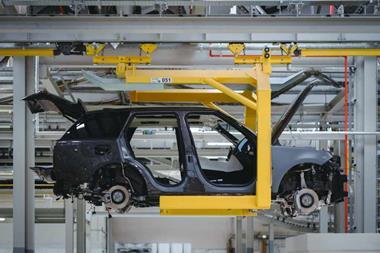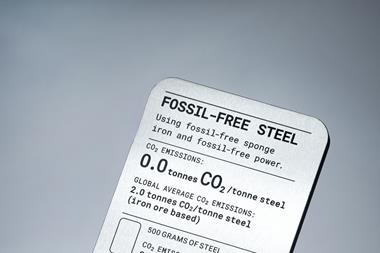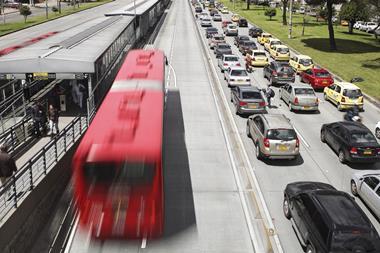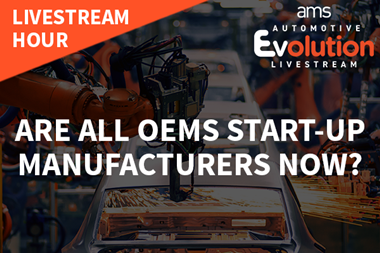The world’s largest LCV markets and a variety of manufacturing facilities in multiple countries show that plans for plug-in van programmes are highly advanced in many markets
When the best-selling models in each of the world’s two largest markets are classified as light commercial vehicles, it’s no surprise that more OEMs are looking to expand their LCV production plans. In China, General Motors’ partner Wuling Motors sold more than a million units of its commercial-based Sunshine/ Rongguang/Hong Tu microvan family in 2010, while the Ford F-Series pickup has led not only the light truck segment of the US market for decades, but also the overall new vehicle sales charts.
Rival manufacturers are now muscling into both these giant markets, building new plants or converting older facilities to produce commercial vehicles, while in Europe and Russia, a post-recession sales surge for LCVs is taking hold, as business users renew aging fleets.
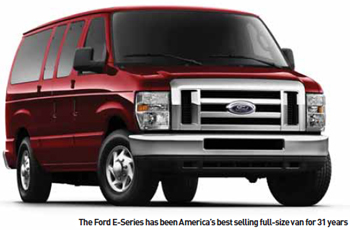 Change has come to the US light commercial market in recent months, with the arrival of Nissan’s fullsized NV, the first all-new entry into a segment dominated by General Motors and Ford. The profit potential in this segment is huge, where the Ford E-Series and Chevrolet Express (and model twin the GMC Savana) have longbattled for supremacy. In 2010, a relatively bad year for US van sales, the Ford E-Series (Econoline) still managed 108,258 registrations. In March this year, Ford delivered an impressive 11,827 E-Series units - now a fifteen-year old model.
Change has come to the US light commercial market in recent months, with the arrival of Nissan’s fullsized NV, the first all-new entry into a segment dominated by General Motors and Ford. The profit potential in this segment is huge, where the Ford E-Series and Chevrolet Express (and model twin the GMC Savana) have longbattled for supremacy. In 2010, a relatively bad year for US van sales, the Ford E-Series (Econoline) still managed 108,258 registrations. In March this year, Ford delivered an impressive 11,827 E-Series units - now a fifteen-year old model.
Against the backdrop of a recovering US economy and a raft of small businesses choosing to update their LCV fleets, Nissan has timed the arrival of the Econoline-challenging NV to perfection. Built at Canton, Mississippi alongside the similarly-platformed Titan pickup, the big Nissan van only entered production in January.
In preparation for the NV build at its eight-year old Canton plant, Nissan made extensive modifications to its body assembly shop, adding 1,300m2 (14,000 sq. ft.) to its existing 4,000m2 (43,000 sq. ft.) area. Additionally, about 900m2 (10,000 sq. ft.) were also added to the paintshop, taking the total area to 4,600m2 (59,000 sq. ft.). With a new assembly added in trim and chassis, total investment came to $118m.
In light of the Renault-Nissan Alliance and Daimler signing a broad-ranging co-operation agreement in April 2010, it is entirely possible that the NV might become the basis of a Canton-built van to replace the Mercedes-Benz Sprinter in North America when that model reaches the end of its lifecycle in 2013. Launching the Sprinter in the US and Canada in January 2010, which was also when the Dodge-branded Sprinter was discontinued, the Sprinter is assembled at a Freightliner plant in Ladson, South Carolina, from kits supplied by the mother plants in Ludwigsfelde and Düsseldorf, Germany.

In addition to the CKD build of the Mercedes-Benz Sprinter, a three-way joint venture between Daimler, Taiwanese vehicle assembler China Motor and the Chinese-state owned Fujian Motor, also assembles the model in Fuzhou, Fujian province. Established in 2005 and originally called DaimlerChrysler Vans China (DCVC), the name has changed to Fujian Daimler Automotive Company (FJDA).
 The smaller Mercedes-Benz Vito and Viano vans are also assembled at the Fuzhou plant, which started exports to India and SE Asia in January 2010. The anticipated annual sales targets for these regions could reach 50,000 vehicles. In contrast to the growing - but still modest - operations of FJDA, Nissan is in the process of expanding what is already one of the largest light commercial JVs in China. Zhengzhou Nissan (ZNA) began construction of its second LCV plant in Zhengzhou, Henan province in September 2010. Established in 1993, ZNA was Nissan’s first production base in China. Now, co-owned by Donfeng Motor, it is the company’s main LCV operation, Nissan’s state-run partner. Products range from mid-size to large commercial vehicles. Once the second plant in Zhengzhou enters operations, ZNA will have a total LCV production capacity of 200,000 units, up from the current 60,000. A third stage is already planned, taking total capacity to 240,000 vans and light trucks by 2012. The vehicle comprising the majority of production is anticipated to be the NV 200 van.
The smaller Mercedes-Benz Vito and Viano vans are also assembled at the Fuzhou plant, which started exports to India and SE Asia in January 2010. The anticipated annual sales targets for these regions could reach 50,000 vehicles. In contrast to the growing - but still modest - operations of FJDA, Nissan is in the process of expanding what is already one of the largest light commercial JVs in China. Zhengzhou Nissan (ZNA) began construction of its second LCV plant in Zhengzhou, Henan province in September 2010. Established in 1993, ZNA was Nissan’s first production base in China. Now, co-owned by Donfeng Motor, it is the company’s main LCV operation, Nissan’s state-run partner. Products range from mid-size to large commercial vehicles. Once the second plant in Zhengzhou enters operations, ZNA will have a total LCV production capacity of 200,000 units, up from the current 60,000. A third stage is already planned, taking total capacity to 240,000 vans and light trucks by 2012. The vehicle comprising the majority of production is anticipated to be the NV 200 van.
While plans for Renault car production appear to be permanently stalled, Nissan’s Alliance partner is hoping to have more luck with plans for a new LCV venture in China, as assembly of the new Master van in Wuhan in late 2011. Renault’s proposed manufacturing operation will see it reviving a long-idled JV it had with China Sanjiang Space Group. Sanjiang Renault Automotive Company (SRAC) is reportedly planning annual assembly of an initial 20,000- 30,000 units per annum of this big vehicle series, which is already available in Europe with both front- and rear-wheel drive applications. The Renault Master sits on a GM Europe platform and is built alongside the Nissan NV 400 and Opel- Vauxhall Movano at the Batilly plant in France. As for the major domestics, the largest of all, SAIC, is due to start production of the former LDV Maxus at a plant in Wuxi, near Shanghai, in July this year.
This follows the purchase of assets belonging to the bankrupt British vanmaker in 2009. The vehicle itself, which was first produced in 2005, will be renamed Datong, with Maxus becoming a new commercial vehicle brand. Privately-owned Great Wall might not have the resources of SAIC or heavy vehicle maker Sinotruk, but what it does have is an increasingly ambitious LCV export programme. High quality, savvy marketing and keen pricing have combined in markets such as Australia to give the firm a first taste of success. Indeed, Great Wall is now a regular in the top-ten best-seller list in the Australian commercial vehicle market, most recently placing ninth, ahead of Volkswagen and gaining on Hyundai.
With a presence already in some continental European markets including Italy, Great Wall will be the first Chinese OEM to launch an LCV in the UK market. The Wingle pickup, which will be rebadged Steed, is due to go on sale from October. Further plans include a CKD plant, due to come on stream in EU member state Bulgaria from mid- 2011. This 50,000upa facility is a joint venture project with local entrepreneur Grisha Gantchev’s Litex Group.
The sheer number of light commercial brands across the market has forced manufacturers into an ever-more complex web of joint production ventures. Opel, Vauxhall, Renault and Nissan (Renault will also build a Mercedes-badged small van at its Mauberge plant from 2012); Mercedes-Benz and Volkswagen; Peugeot, Citroën and Fiat Professional – only Ford of Europe, with Transit van plants in England and Turkey, goes it alone.
Opel-Vauxhall and Renault first started sharing production facilities back in 1996. The cross-brand co-operation looks set to continue following the recent announcement of a joint vehicle programme that will last beyond 2020. The next-generation Opel and Vauxhall Vivaro van will be built at Vauxhall Motors’ plant in Luton, UK, from 2013, while its twin, the Renault Trafic, will shift to what is currently a Renault car plant – Sandouville in France – which builds the Renault Laguna and Espace models.
Pooling R&D resources and the decision to make the high-roof (H2) versions for all three brands at Sandouville both help to save cash. Only a year ago, it was thought that the Luton plant would be closed, especially when van sales dropped during the recent downturn. A wage freeze and other concessions from the 1,500 unionised workers at Luton led Nick Reilly, Chairman of Opel and Vauxhall, to state that the plant will “continue to play an important role in the Opel- Vauxhall manufacturing network.”
The other main JV for van production in Europe is PSA and Fiat’s SEVEL (Società Europea Veicoli Leggeri) agreement which sees the two groups sharing plants in Italy (SEVEL Sud) and France (SEVEL Nord). The deal covering joint LCV production between Fiat and PSA dates back to 1978; under the existing arrangement this will continue to at least 2017.
SEVEL Sud, located in Val di Sangro, near Atessa, Italy, is claimed to be the largest European factory producing medium and large vans, including the front- and allwheel drive X250 series. Branded as the near-identical Fiat Professional Ducato, Citroën Jumper/Relay and Peugeot Boxer, the latter of which is also exported to Mexico (Peugeot Manager). It is also likely that Fiat will start shipping vehicles to North America in 2012, offering a variant of the Ducato rebranded as the Dodge Ram Tradesman, joining the smaller, Canadian-built, Ram Cargo Van.
The SEVEL Nord plant, located near Valenciennes, France, builds slightly smaller vans, including the current front-wheel drive V-series models which first entered production in 2006.
The range consists of the Fiat Professional Scudo, Citroën Jumpy/Dispatch and Peugeot Expert, while two passenger versions of the previous-generation U40-series vans are also produced, the Citroën C8 and its twin, the Peugeot 807.
The European Volkswagen range includes the Caddy, built in Poznan, Poland and Kaluga, Russia, and the far larger Crafter, which is produced by Mercedes-Benz, together with its Sprinter twin, at two plants in Germany (Düsseldorf and Ludwigsfelde). While its large and small vans continue to be successful, Volkswagen’s main LCV for Europe has always been the Transporter; the iconic model is now in its fifth generation. Build takes place at the group’s Hanover plant, first opened in 1955, and where 12,500 people are employed. The facility extends over one million square metres, and produced more than 130,000 vehicles in 2010, including the passenger versions of the Transporter, marketed as the Multivan, Shuttle, Caravelle and/or California. As well as all the T5-series vans and their passenger variants, Hanover also makes bodies for the Porsche Panamera, plus components such as cylinder heads, running gear parts and a variety of heat exchangers for many VW Group vehicles.
At the 2010 Hanover Commercial Vehicle show, Opel debuted an experimental extended-range plug-in van, the Vivaro e-Concept. Combining an IC engine and a lithium-ion battery pack (mounted under the floor), claimed total range for the experimental model was 400km. With an all-new Vivaro scheduled for launch in 2013, an EV drivetrain for one of Opel and Vauxhall’s best-selling delivery vans is expected to be offered in due course.
It’s not only Renault and GM Europe that plan to launch electric vans in Europe. PSA Peugeot Citroën also intends to start building plug-in LCVs as part of its own joint venture. In September 2010, PSA revealed that it will call on its existing EV technology partner Mitsubishi Motors to launch plug-in versions of the Citroën Berlingo and Peugeot Partner vans. Both will come down the same line at PSA’s Vigo plant in Spain, with production due to start by late 2012.
 Plug-in versions of the previous-generation Citroën Berlingo First and Peugeot Partner are in fact already on sale in France, albeit in small numbers. These models are made by Venturi Automobiles at its Sablésur- Sarthe plant, with the firm having built a combined eight vehicles a day since December 2010.
Plug-in versions of the previous-generation Citroën Berlingo First and Peugeot Partner are in fact already on sale in France, albeit in small numbers. These models are made by Venturi Automobiles at its Sablésur- Sarthe plant, with the firm having built a combined eight vehicles a day since December 2010.
Like PSA, the Mercedes-Benz Vans division of Daimler has found Spain to be a particularly business-friendly place in which to manufacture plug-in LCVs. A batch of 100 Mercedes-Benz Vito E-Cell electric delivery vans was made in 2010, with series production expected to commence at the Vitoria plant later in 2011 - up to 2,000 further vehicles are scheduled to be built. Mercedes-Benz began field trials of the model in its home town of Stuttgart and also Karlsruhe, in July 2010, in partnership with EnBW Energie Baden-Württemberg AG.
In North America, plans for plug-in vans are also taking shape. One of the more interesting developments is General Motors’ involvement with Bright Automotive, a start-up based in Anderson, Indiana. In August 2010, GM signed a JV agreement covering production of a plug-in hybrid (PHEV) delivery van, at which point GM also took a minority holding in Bright Automotive. In return, Bright now has access to GM’s EV technology, which it has used to develop a prototype delivery van, the Bright Idea. Following the opening of an engineering and technical centre in Rochester Hills, Michigan, a limited production run for the Idea is expected.
Ford, too, is developing an EV van. The company’s Transit Connect Electric is a true global vehicle, with production being spread across four countries. Body shells come from Ford Otosan in Turkey, while the vehicle is then fitted with its EV-specific components at an AM General facility in Livonia, Michigan.
Fitting of the so-called ‘Force Drive’ electric powertrain assembly is carried out by Ford’s partner, Azure Dynamics, with BorgWarner delivering a 31-03 eGearDrive single-speed transmission. Johnson Controls- Saft is supplying the vehicle’s lithium-ion battery pack. The European version of the Transit Connect Electric will also come from Turkey, but instead of being shipped to Michigan, it will be modified by Lotus Lightweight Structures in Worcester, UK, starting in June.
While in the US and Europe, production of plug-in vans is centred on the medium and large classes, Mitsubishi Motors is leading in the race to bring EV technology to the micro-van segment. In April, its Mizushima plant in Okayama prefecture began initial assembly of the Minicab MiEV, a modified version of an existing small delivery vehicle. Series production is scheduled to follow in the fourth quarter this year.
Despite the enormous swings that have taken place in the Russian car and light commercial vehicle markets over the past 12 months, GAZ Group remains the clear number one in LCVs, selling 16,140 vehicles in the first quarter of 2011. To give that some perspective, Volkswagen sold 16,780 passenger cars in the same period, making it Russia’s ninth most popular brand (VW van sales totaled 2,350 units).
GAZ sold a combined 61,300 units of the GAZelle and Sobol models in 2010, making these small and mediumsized vans its two best-selling LCVs. Despite a strong rise in sales (up 45% year-on-year in 2010) and a market in strong rebound, GAZ management decided to bring in outside capital in the form of Mercedes-Benz Vans. In December 2010, the firms announced plans covering production of 25,000 Mercedes-Benz Vito vans per annum at GAZ Group’s main LCV plant in Nizhny Novgorod, starting in third quarter 2011. The agreement also includes local production of engines, transmissions, axles and other components, for use in the Sprinter and GAZ vehicles.
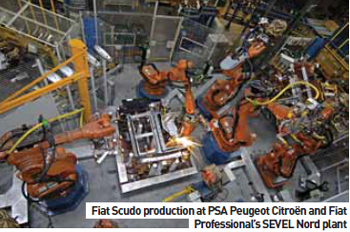 Siegfried Wolf, Chairman of the OAO GAZ Board of Directors, commented at the time of the announcement: “Cooperation with Daimler will allow GAZ to attract new technologies, to create new jobs, and to develop a modern automotive component base in Russia. It falls within the Russian Government drive to increase the automotive industry’s share of the GDP and to improve our manufacturing capacities and technologies.”
Siegfried Wolf, Chairman of the OAO GAZ Board of Directors, commented at the time of the announcement: “Cooperation with Daimler will allow GAZ to attract new technologies, to create new jobs, and to develop a modern automotive component base in Russia. It falls within the Russian Government drive to increase the automotive industry’s share of the GDP and to improve our manufacturing capacities and technologies.”
Volker Mornhinweg, Head of Mercedes-Benz Vans, underlined why the deal is vital for the division. “For Mercedes-Benz Vans, Russia remained an unexplored market. Our traditional markets are in Western Europe, Latin America, and North America. In Russia the market volume for midsized and large vans is about 117,000 units.
By 2020 the market is expected to grow to approximately 275,000 units. That shows how important and right it is to be active in Russia. Together with GAZ we will put the optimal products for the Russian market on the road. To do this, Daimler AG will invest more than €570m has now been invested since its establishment in 2007, is fully owned by the Volkswagen Group. During 2010, it moved towards full manufacturing and now has its own body, paint and assembly operations, with production having been expanded to 150,000 cars and LCVs per annum.
With LCV sales and production falling in Japan, a modest Korean market and such vehicles still not at the multimillion annual levels in Brazil or India, the world’s major LCV manufacturers look likely to remain firmly focussed on North America, China, Europe and Russia. Moreover, of the larger global OEMs, Toyota-Daihatsu, Honda, SAIC, Hyundai-Kia and Tata Motors seem content to restrict LCV sales to their respective home markets. The conditions then, seem ripe for continued control of LCV markets in the biggest regions by a handful of vehicle makers. Yet if the current strong growth in countries such as the US, China, Russia and parts of Europe remains, changes to the existing status quo might well be on the way.





























